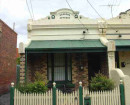COOLART
36-40 LORD SOMERS ROAD SOMERS, MORNINGTON PENINSULA SHIRE
-
Add to tour
You must log in to do that.
-
Share
-
Shortlist place
You must log in to do that.
- Download report





Statement of Significance
Coolart originally formed part of one of the oldest grazing properties on the Mornington Peninsula.
"Coolart" or "Coolourt" (meaning sandy area in the local aboriginal dialect) was first taken up in 1840 by Alfred and Henry Meyrick after whom the nearby Creek and township of Merricks are named. They developed a vast extent of land, but moved to Gippsland c. 1846.
The Coolart lease changed hands a number of times. Most of its owners, many of them prominent figures - have left their mark on the property. Between 1846 and 1875 the lessees were William and John Payne (1846-53), Harry Drew (1853-54), Joseph Hann (1853-62), and John Benn and Theodutus John Sumner (1862-75). Bell and Sumner were leading Melbourne businessmen and senior partners in Grice, Sumner and Co.
It is believed that the "barracks" (or original accommodation) building and brick outbuildings were erected in the 1860s. Because of its probable age and historical associations the barracks may be regarded as one of the most important historic buildings on the peninsula. The main two-storey brick residence was built for Frederick Grimwade, the noted businessman and philanthropist who owned Coolart from 1895-1907. It was built in 1896-97 to the design of the architectural firm Reed, Smart and Tappin.
Grimwade sold Coolart to Thomas Shaw Armstrong, a grazier, in 1907. Subsequent owners were Capt JAS Balmain, Stewart Robertson, John Freehan and the noted Melbourne businessman Thomas J Luxton whose family owned with the McEwans Hardware chain of stores.
Luxton had a significant involvement with the property, most notably in the creation of the modern homestead garden and the creation of wetlands and a private wildlife reserve.
[Source: Report to the Minister]
-
-
COOLART - Permit Exemptions
General Exemptions:General exemptions apply to all places and objects included in the Victorian Heritage Register (VHR). General exemptions have been designed to allow everyday activities, maintenance and changes to your property, which don’t harm its cultural heritage significance, to proceed without the need to obtain approvals under the Heritage Act 2017.Places of worship: In some circumstances, you can alter a place of worship to accommodate religious practices without a permit, but you must notify the Executive Director of Heritage Victoria before you start the works or activities at least 20 business days before the works or activities are to commence.Subdivision/consolidation: Permit exemptions exist for some subdivisions and consolidations. If the subdivision or consolidation is in accordance with a planning permit granted under Part 4 of the Planning and Environment Act 1987 and the application for the planning permit was referred to the Executive Director of Heritage Victoria as a determining referral authority, a permit is not required.Specific exemptions may also apply to your registered place or object. If applicable, these are listed below. Specific exemptions are tailored to the conservation and management needs of an individual registered place or object and set out works and activities that are exempt from the requirements of a permit. Specific exemptions prevail if they conflict with general exemptions. Find out more about heritage permit exemptions here.
-
-
-
-
-
LORD SOMERS CAMP
 Victorian Heritage Register H2292
Victorian Heritage Register H2292 -
Coolart Lagoon and Wetlands
 National Trust
National Trust -
Dais cotonifolia
 National Trust
National Trust
-
13 Flinders Street, Queenscliff
 Queenscliffe Borough
Queenscliffe Borough -
162 Nicholson Street
 Yarra City
Yarra City -
164 Nicholson Street
 Yarra City
Yarra City
-
-












